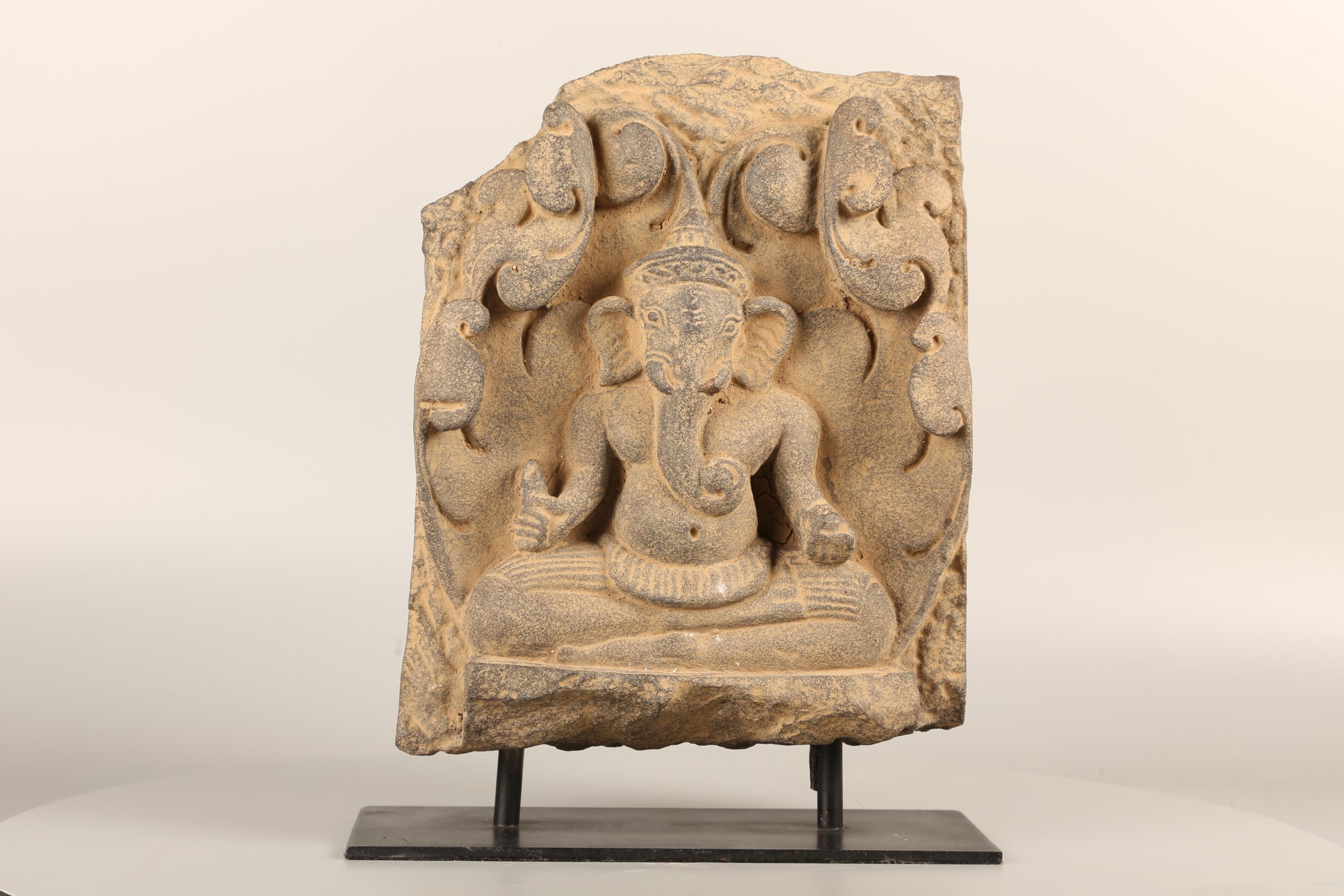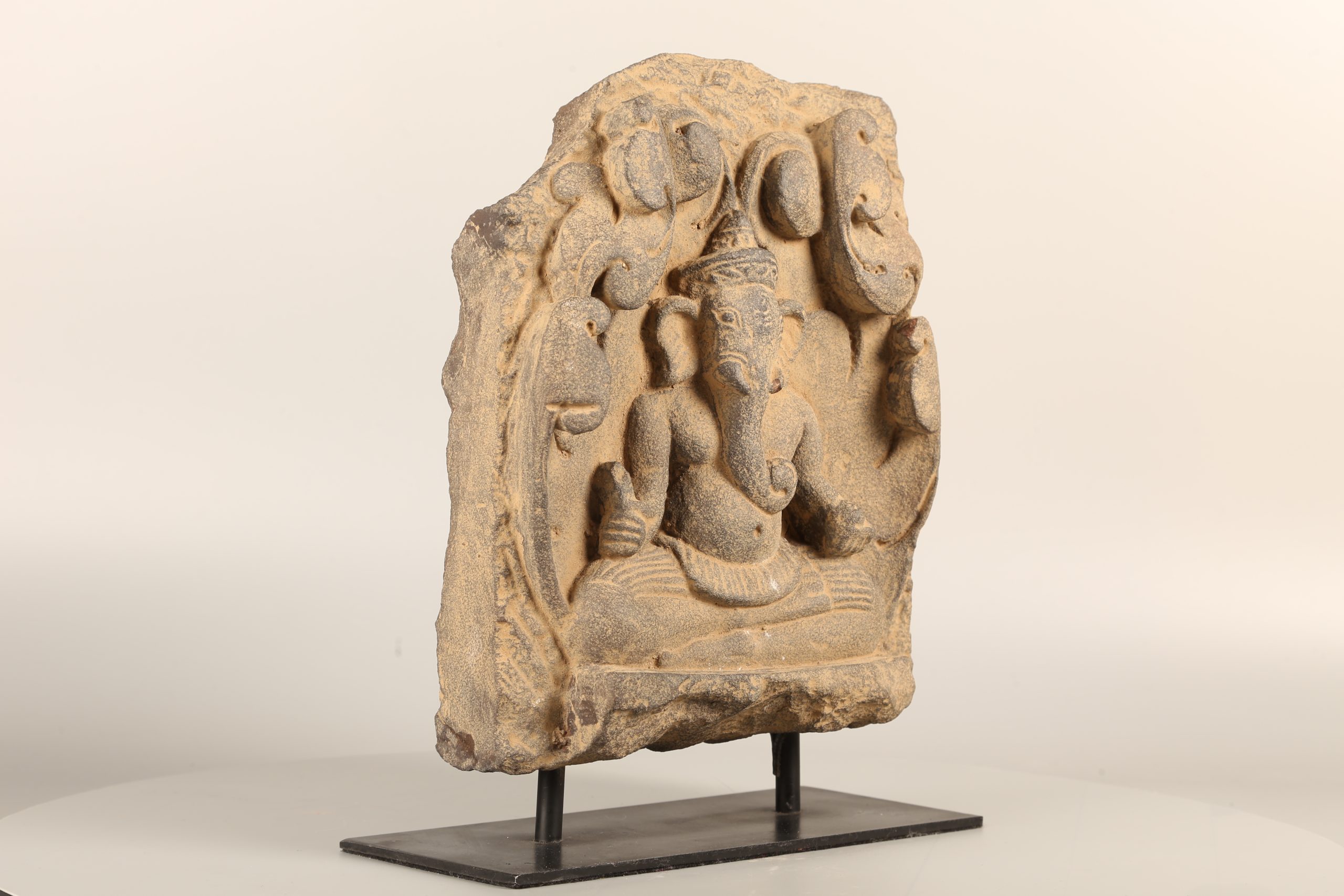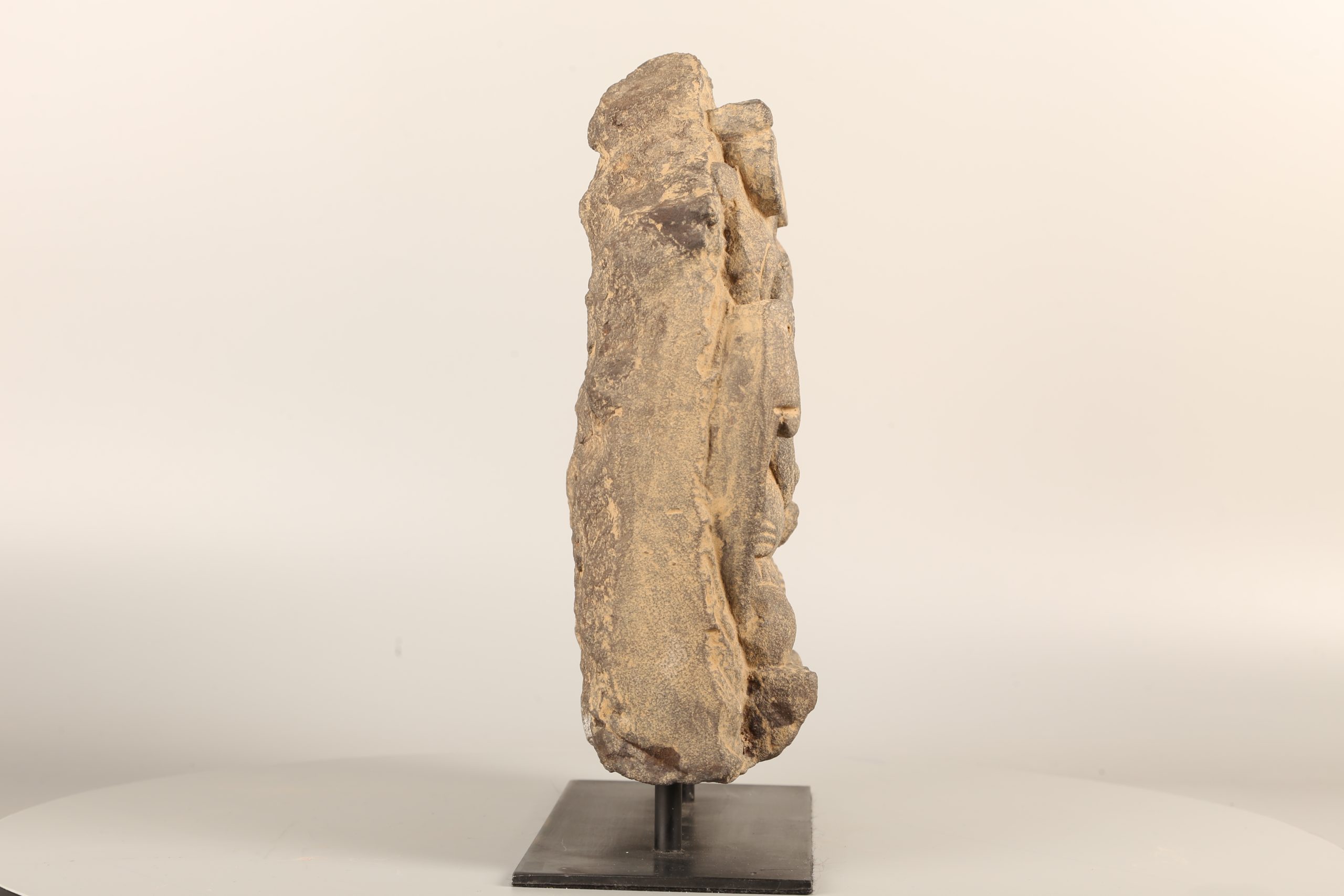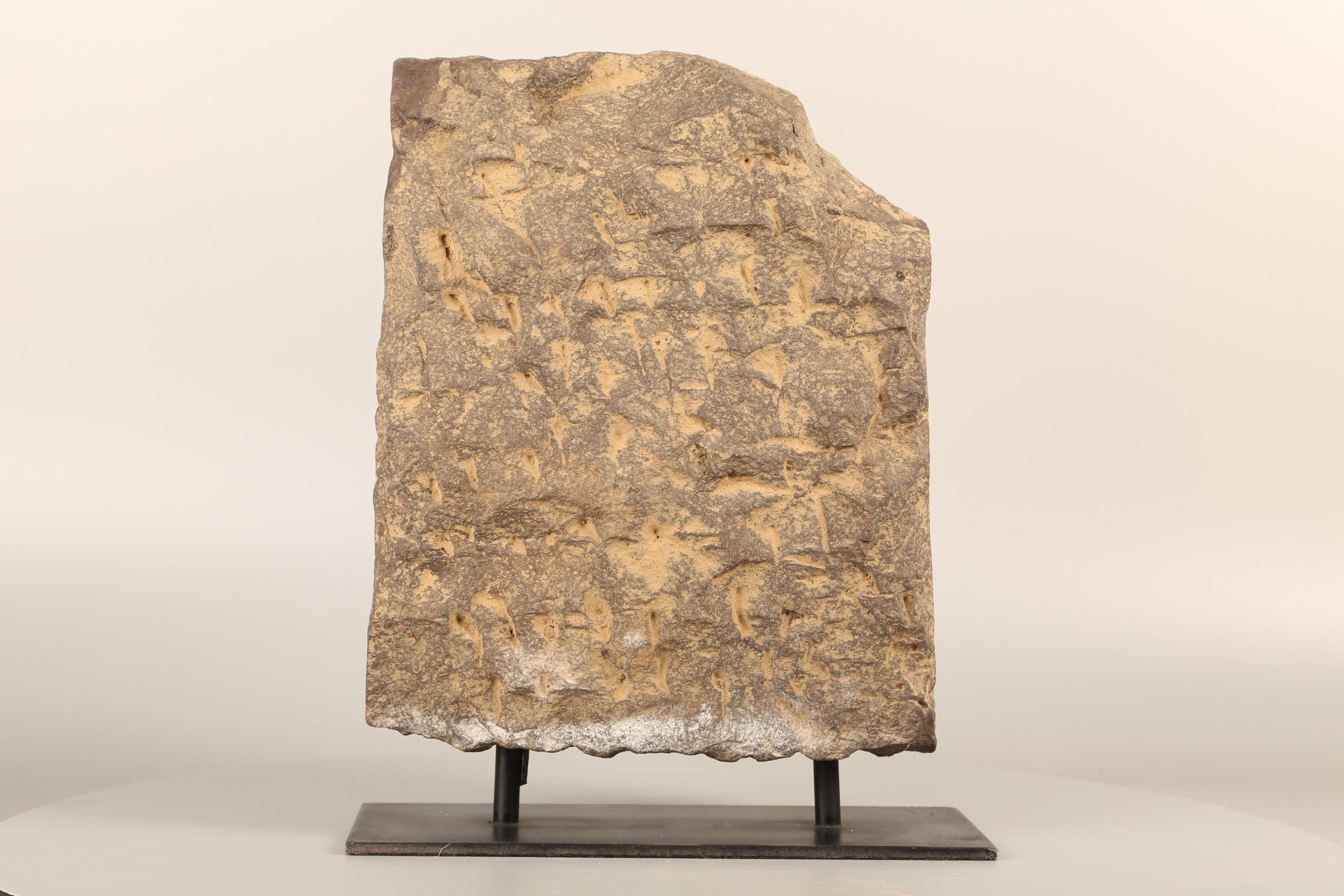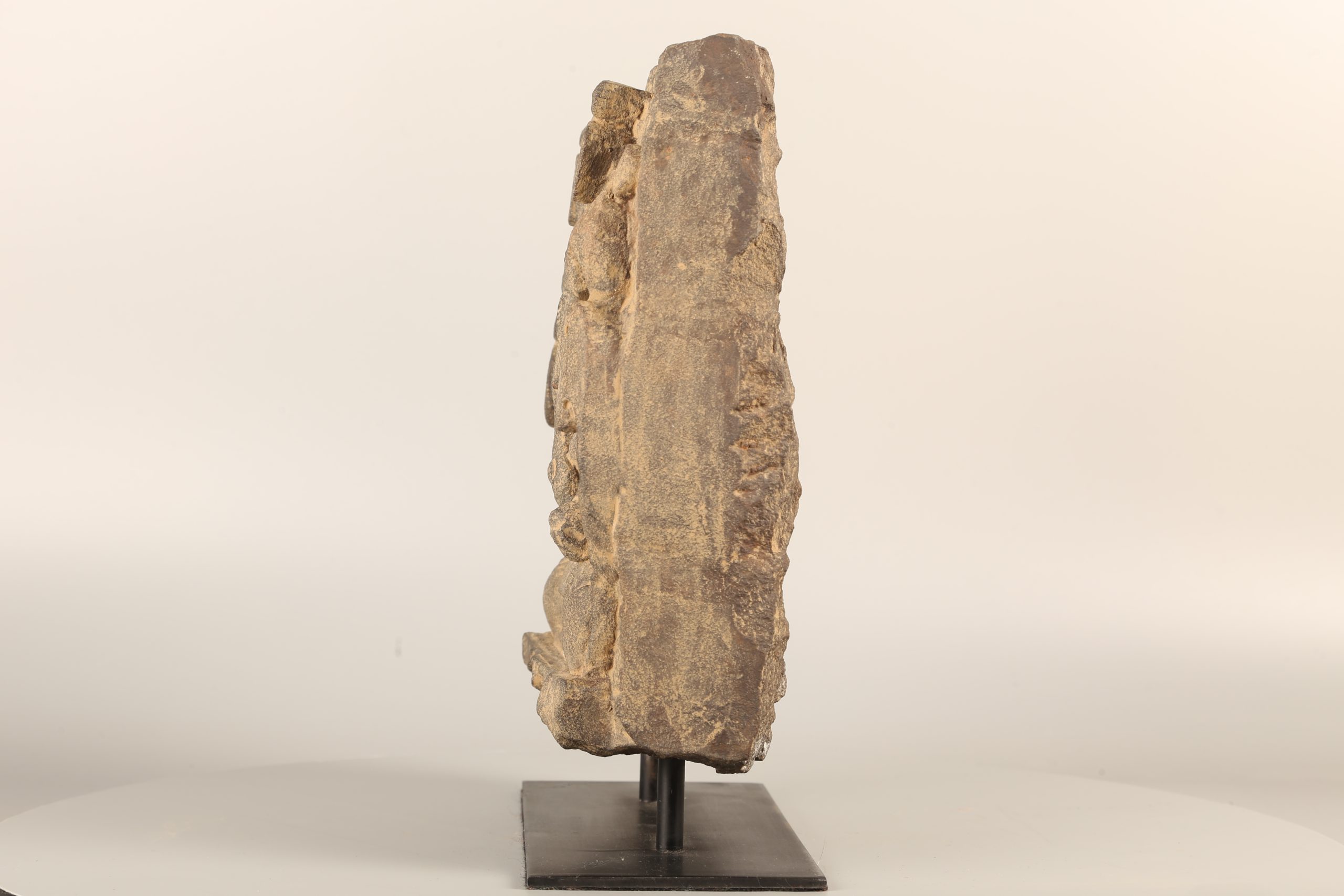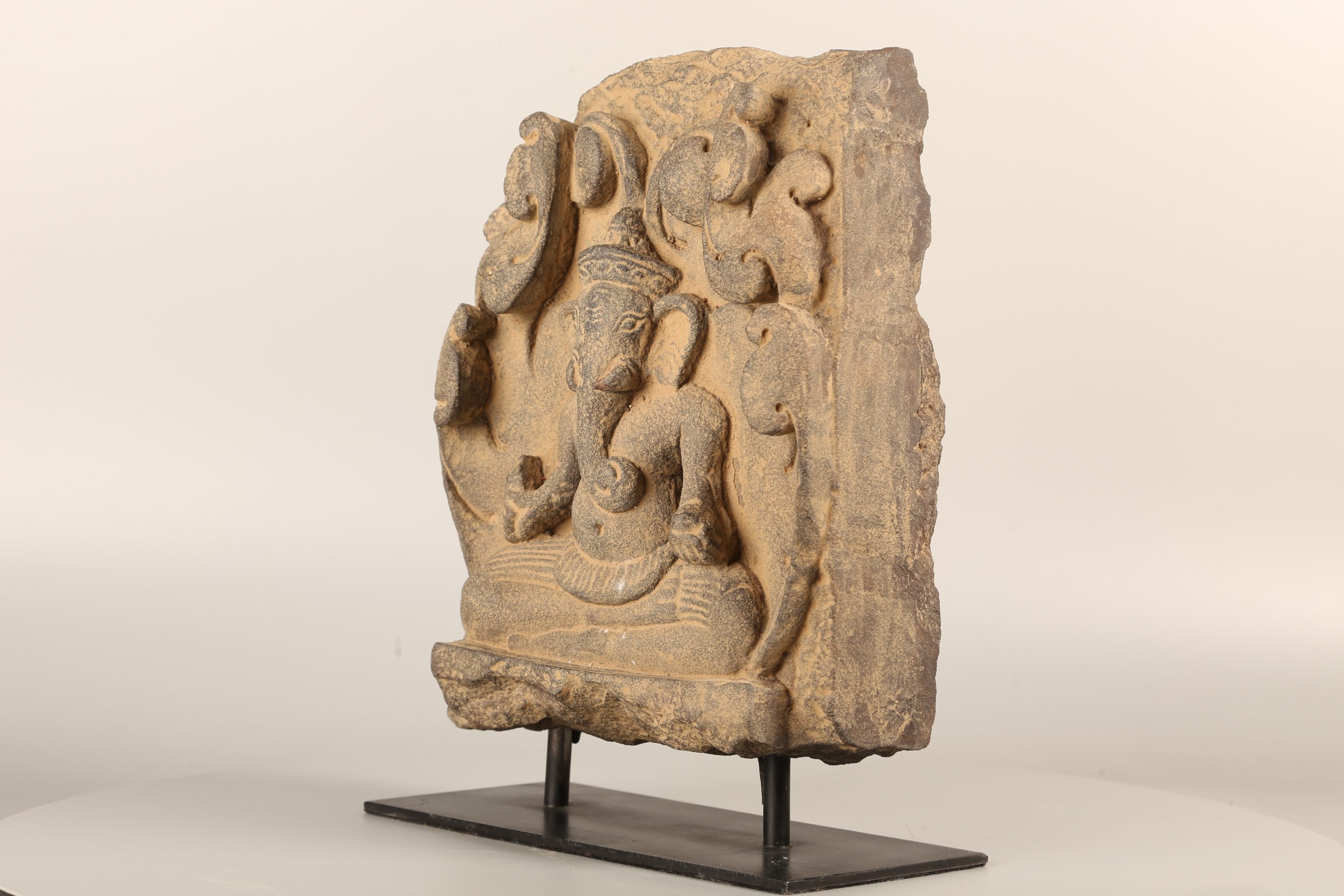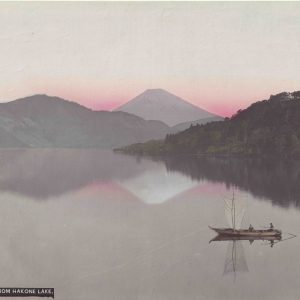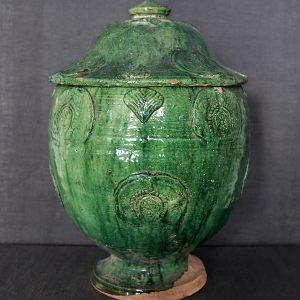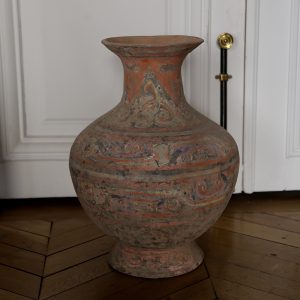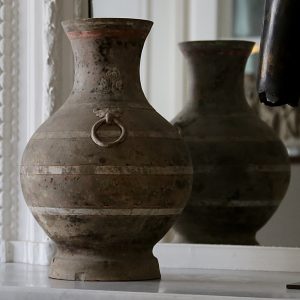Lintel frieze decorated with a Gaṇeśa
Sandstone
Cambodia
11th-12th centuries, Angkorian period
H: 26 cm or 10 inch
360° view
Description
Architecture highlighted by decorative cycles
This illustrated lintel frieze depicts Gaṇeśa seated, and took place in a Hindu shrine. Under Indian influence, the Khmers adopted Buddhism and Hinduism, but also other cultural practices, such as writing in Sanskrit. Thus, the cult of Gaṇeśa also spread to Cambodia. If one of the particularities of Khmer art is the important production of sculptures in the round, it is here the high relief that has been used, thus placing this work in an architectural context. Indeed, this relief was to be part of a decorative cycle that developed on the lintels of the temple. According to tradition, the devotees had to make a ritual turn, in a particular direction, before entering the sanctuary. This relief was certainly placed at the beginning of the cycle, since the role of Gaṇeśa is to break down obstacles and contribute to the prosperity of any undertaking. In this cultic context, his image placed the worshipper under good auspices, thus helping to put him in a condition of devotion.
Angkorian art, between stylisation and serenity
The god is dressed in a short sampot and iswearing a finely incised diadem. His clothing is characteristic of Khmer art, and is treated in the style of the Baphuon. Indeed, the latter is covered with folds, incised in the stone, and rises on the belly of the god in the form of a plated pocket. The figure of Gaṇeśa is set in a decoration of abundant, highly stylised foliage. These deeply carved vegetal motifs are frequently represented on Baphuon-style reliefs, and bring great vivacity to the work. This decoration also helps to enhance the narrative aspect of the architectural friezes that adorn the lintels of the temples. Gaṇeśa is presented in a hieratic attitude, typical of Angkorian representations. The model is supple and her figure slender, despite her overweight. Her legs are particularly elongated, in a position that reflects a calm attitude. The navel, treated by a deep incision, is also similar to representations of the Baphuon. The soft hemline of the face, as well as its eyes delicately stretched into almond shape and underlined by incisions, corroborate the serene expression of the god.
The height of Khmer art
This work is part of the Angkorian period (802-1431), which is considered the peak of Khmer art. This period began under the reign of Jayavarman II, who established his capital at Angkor, in the central plain of the country. Located next to the Great Lake, the site benefits from numerous natural resources, notably favoured by the phenomenon of the inversion of the Mekong River, which drains the entire territory. During this long period, the nerve centre of the capital gradually shifted, and numerous temples were built, giving rise to an unparalleled artistic emulation. Under Thai pressure, the capital of Angkor was abandoned in 1431, thus putting an end to an era considered the most brilliant artistic period in Cambodia. Known for the “mountain” temples, designed as real homes for the deities, the Angkorian period was tinged with symbolism, and numerous statues accompanied the architectural achievements. This one is apparently in the style of the Baphuon, a mountain temple on the site of Anghor Thom built between the 11th and 12th centuries.
Provenance: French private collection

